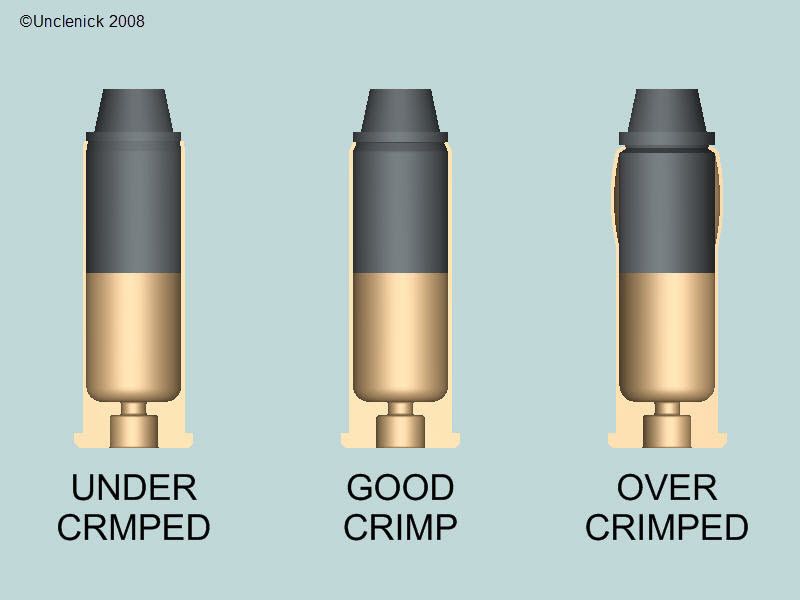I've been trying to understand the various types of crimps and when they are to be used. This question, in my case, is in regards to pistol cartridges. My understanding is that a taper crimp does not actually crimp, but simply removes the bell created by the expander, and the roll crimp will actually "pinch" the case mouth into the bullet. The third type of crimp it seems like, is the Lee Factory Crimp, but I'm not sure which category this directly falls into as it seems to be a bit of a hybrid?
Also, I've been reading that you cannot roll crimp without a cannelured bullet. For my 9mm, I currently have just a standard 9mm 115 GR bullet with no cannelure and a set of Hornady dies that I'm using. They are the standard, custom grade, without taper crimp (so I'm assuming roll crimp, if you choose to after seating). Does this mean that I cannot crimp these bullets with my current seating die? Will I need either a Lee Factory Crimp Die, or a taper die?
I tried belling the mouth so that it just BARELY allowed the bullet to start, and then seated it to the recommended COL of 1.100, but when pressing the completed cartridge into the loading bench, the bullet did move back into the case, so it appears neck tension is not enough.
Just looking for some clarification on these things.
Thank you
Also, I've been reading that you cannot roll crimp without a cannelured bullet. For my 9mm, I currently have just a standard 9mm 115 GR bullet with no cannelure and a set of Hornady dies that I'm using. They are the standard, custom grade, without taper crimp (so I'm assuming roll crimp, if you choose to after seating). Does this mean that I cannot crimp these bullets with my current seating die? Will I need either a Lee Factory Crimp Die, or a taper die?
I tried belling the mouth so that it just BARELY allowed the bullet to start, and then seated it to the recommended COL of 1.100, but when pressing the completed cartridge into the loading bench, the bullet did move back into the case, so it appears neck tension is not enough.
Just looking for some clarification on these things.
Thank you

